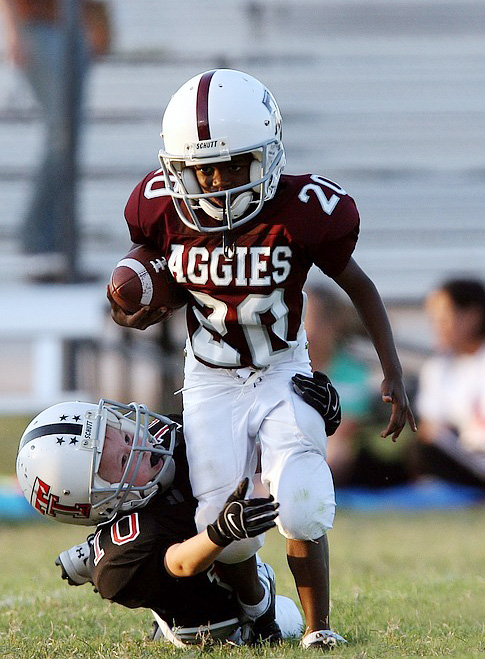Coaches notice changes throughout youth sports landscape
Youth sports have been a critical part of childhood development for decades. According to the National Survey of Children’s Health, from 2020-2021 roughly half of children aged 6-17 “participated in a sports team” or “took sports lessons after school or on weekends.”
Though the numbers are increasing each year, some say the landscape of the youth sports industry is changing, and not necessarily for the better.

“In ten years, the style of play has changed fairly significantly,” McSweeney said. “Very few teams have stayed with the ‘walk it up, run a set play, wait for a good look’ [type of style]. Today, most teams want to push the ball up the floor, play at a quick pace.”
McSweeney has also noticed a change in parents’ attitudes about their kids playing the game, saying he thinks parents should be more understanding.
“They are high school kids … they will make mistakes. Relax.”
Parents’ criticism towards their children can extend to getting frustrations out on coaches as well.
“At Tulsa Central under head coach Eli Brown we are a 4A powerhouse. … We are winning [a playoff game]. On the way to the locker room, an adult leans over the railing and yells at Coach Brown … ‘I could coach this team better!’ My thought was, ‘Really? We drove 110 miles to Meeker to scout the team we were beating.’”
This change is not exclusive to basketball. Justin Near, a youth football coach in Claremore, OK, has many of the same thoughts on the recent trends of parents being more direct about their kids’ performances.
“[The biggest change is] probably parental support. It’s more of ‘my kid is the best’ nowadays, especially at the youth level. There’s not very many team players anymore, just because they all think their kid is a stud.”
 Near said that parents’ actions, as well as other factors, have caused the players to shift their attitudes toward the sport.
Near said that parents’ actions, as well as other factors, have caused the players to shift their attitudes toward the sport.
“They feed off of their parents, in that respect. But also, given the digital era that we live in, kids don’t interact as much. And so their attitudes and their demeanor has changed over the years that I’ve coached.”
Along with the change in mindsets of players and parents, Near said the rules of the game have evolved in the 12 years he has been coaching. The most recent set of changes includes the requirement of players rotating positions, smaller playing fields and ensuring players of equal size match up against each other.
“With football, it’s gotten a lot softer. Just because of brain injuries, and what’s all getting known about it all. And so USA Football, who’s our governing body, they’ve kind of come in and implemented new rules. And even the NFL has implemented new rules, with the banning of the hip-drop tackle … It is what it is.”
Outside influences can also spark change, like youth sports athletes emulating the play and demeanor of professional athletes.
“The kids are glued to YouTube and whatnot. So they’re seeing all these ESPN spotlight plays and they think they can go out and do it.”
Near makes sure to emphasize to his players that the basics are important, reminding them they are not pros.
“So on a game film, you know kind of humbling them and saying ‘look, that’s them, this is you,’ you know just kind of humbling them in a reasonable way.”
Reese Baumgartner, an assistant football coach at Iowa Western Community College, who coaches youth teams in his spare time, said his primary motive is helping individual players succeed.
“The good and right coaches develop their players. Anybody can get the best kid. Winning has to be secondary,” Baumgartner said.
» ALSO SEE: Study — Parents’ behavior greatly impacts young athletes
Baumgartner stressed that an athlete’s determination has to be present for any chance for improvement.
“You have to say, ‘If you work with me’ to a lot of kids. Some are more dedicated than others, but I would say a majority want to learn. My takeaway is always that if they improve, you succeed.”





